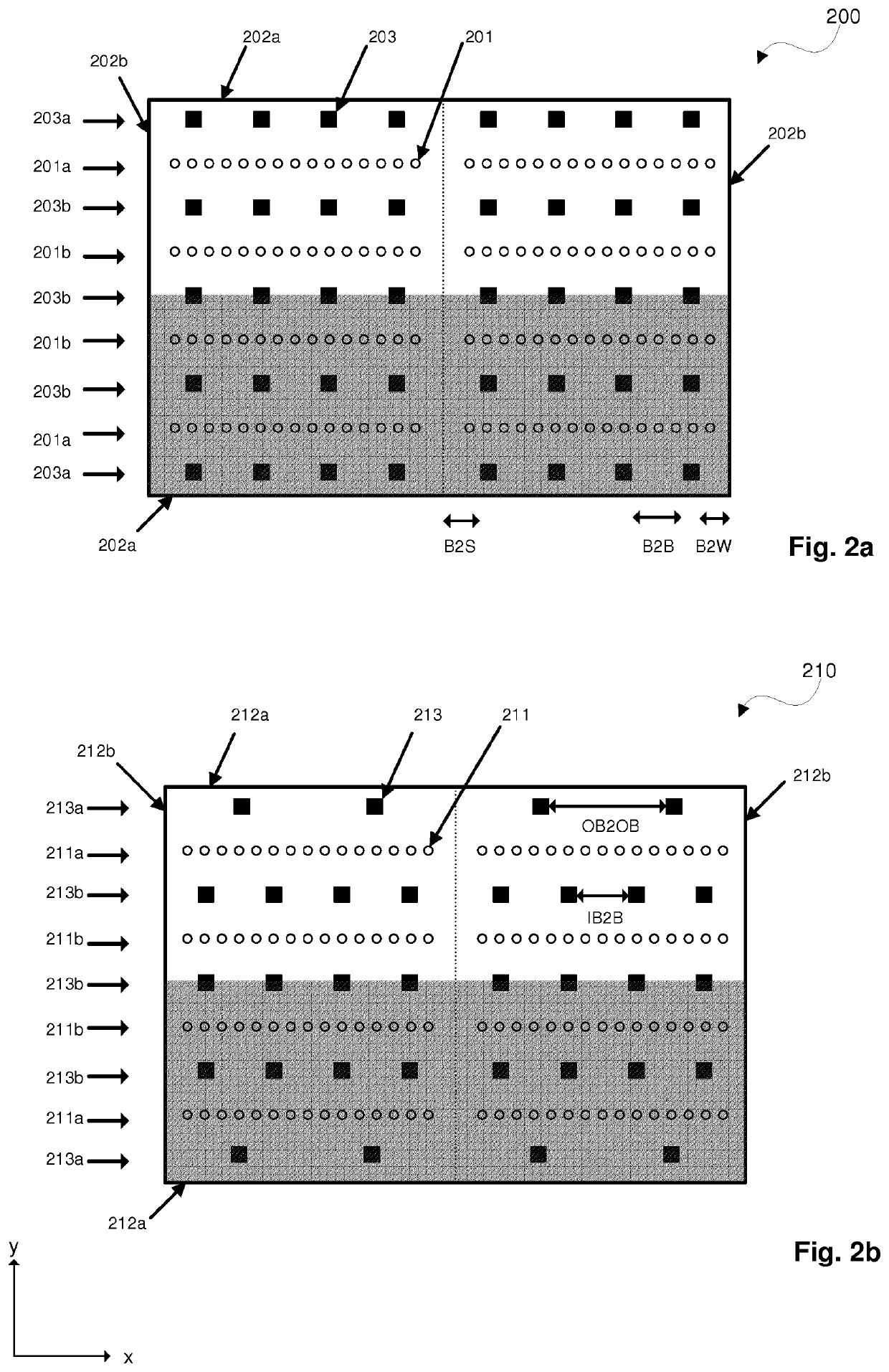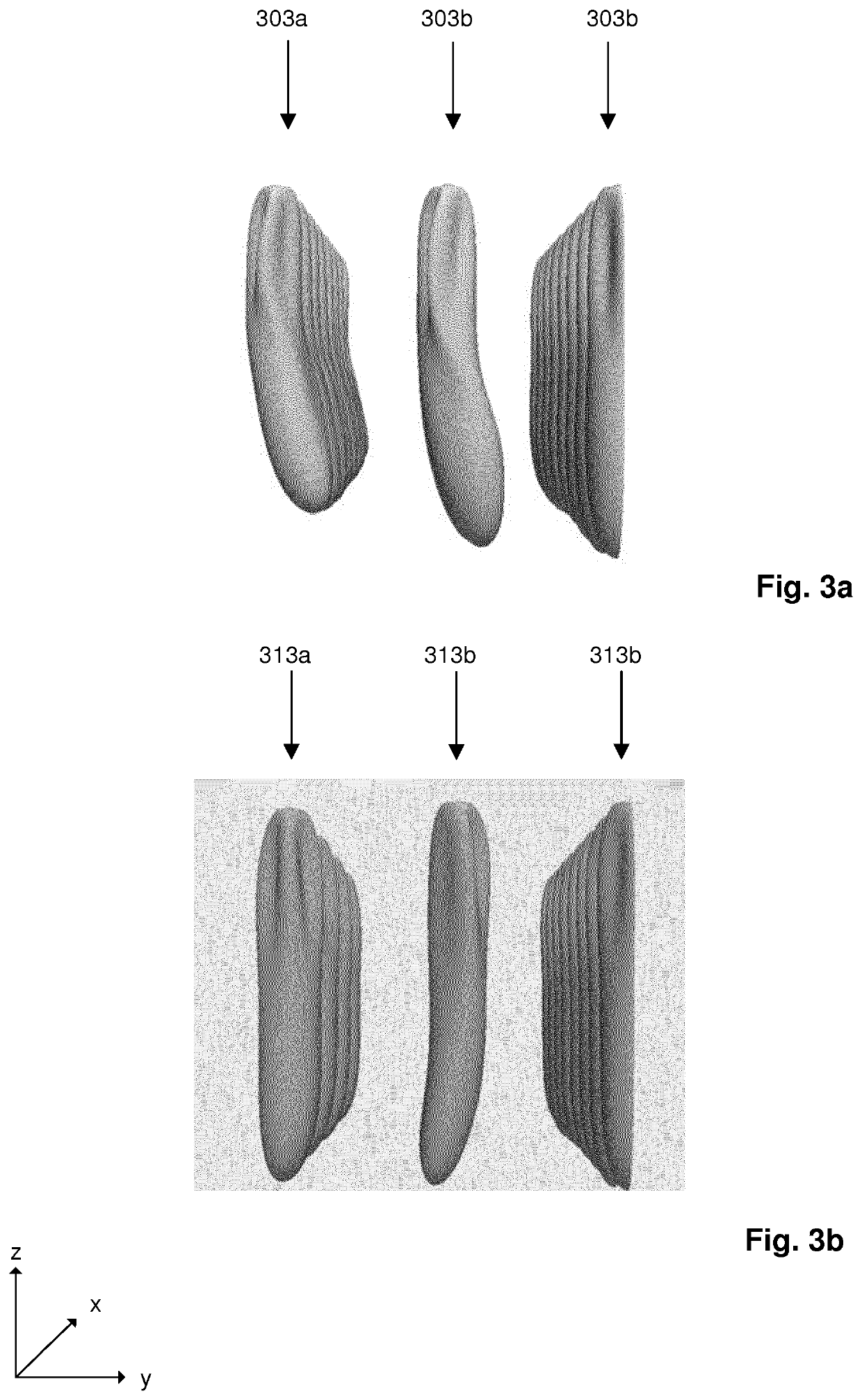Furnace for endothermic process and process for operating a furnace with improved burner arrangement
a technology of endothermic process and burner arrangement, which is applied in the direction of combustion process, inorganic chemistry, lighting and heating apparatus, etc., can solve the problems of high endothermic and slow reaction, inability to meet the needs of smr reactor performance, etc., to achieve easy design, small heat, and low load
- Summary
- Abstract
- Description
- Claims
- Application Information
AI Technical Summary
Benefits of technology
Problems solved by technology
Method used
Image
Examples
Embodiment Construction
[0061]FIG. 1 shows a typical state of the art arrangement of a top-fired (down-fired) furnace 100 used to obtain a synthesis gas from a feed comprising, e.g., methane and steam. The furnace comprises facing furnace walls 102a, formed by the plane in x-z direction and facing furnace walls 102b, formed by the plane in y-z direction. All furnace walls 102a and 102b are provided with a refractory lining on their inner side.
[0062]Catalyst filled process tubes 101 are provided in four rows 101a and 101b with thirty process tubes each, each row of process tubes 101 thereby defining a process tube row. The two process tube rows 101a are arranged between and parallel to furnace walls 102a and process tube rows 101b, thereby defining outer process tube rows. The two process tube rows 101b are arranged between two process tube rows each, thereby defining inner process tube rows. Process tubes arranged adjacent to furnace walls 102b are referred to as end tubes. Each process tube row 101a, 101b...
PUM
| Property | Measurement | Unit |
|---|---|---|
| distance | aaaaa | aaaaa |
| discharge velocity | aaaaa | aaaaa |
| heat | aaaaa | aaaaa |
Abstract
Description
Claims
Application Information
 Login to View More
Login to View More - R&D
- Intellectual Property
- Life Sciences
- Materials
- Tech Scout
- Unparalleled Data Quality
- Higher Quality Content
- 60% Fewer Hallucinations
Browse by: Latest US Patents, China's latest patents, Technical Efficacy Thesaurus, Application Domain, Technology Topic, Popular Technical Reports.
© 2025 PatSnap. All rights reserved.Legal|Privacy policy|Modern Slavery Act Transparency Statement|Sitemap|About US| Contact US: help@patsnap.com



